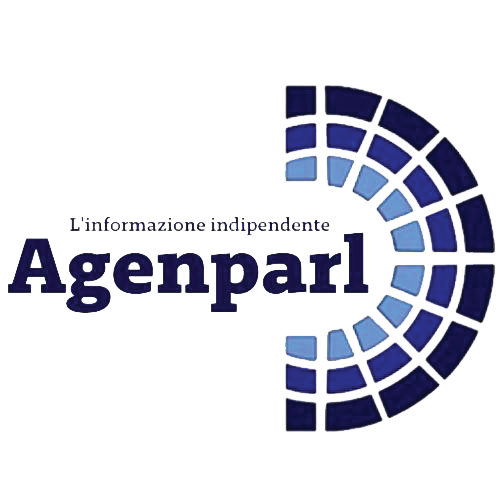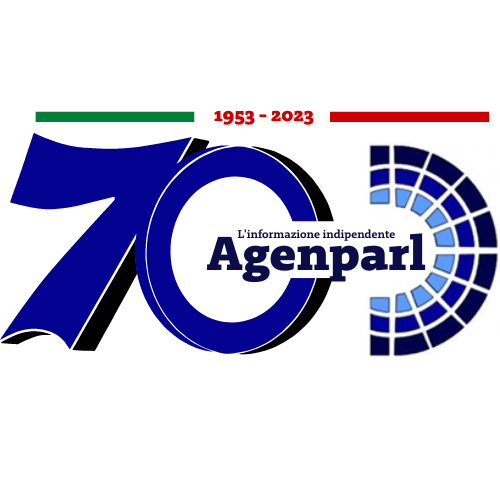 (AGENPARL) - Roma, 30 Agosto 2024
(AGENPARL) - Roma, 30 Agosto 2024(AGENPARL) – ven 30 agosto 2024 A weekly compendium of media reports on science and technology achievements
at Lawrence Livermore National Laboratory. Though the Laboratory reviews
items for overall accuracy, the reporting organizations are responsible for
the content in the links below.
….. LLNL Report, Aug. 30, 2024
The Grid Signature Event Library energizes utility and researcher
understanding of grid behavior by providing access to datasets of waveforms
from grid operations. (Image: Adam Malin/ORNL, U.S. Dept. of Energy)
… On the grid
https://www.techbriefs.com/component/content/article/51317-data-library-enables-analysis-of-electric-grid-issues
A team at Oak Ridge National Laboratory, Lawrence Livermore National
Laboratory,and Pacific Northwest National Laboratory have developed The Grid
Event Signature Library — an open-access online collection of datasets
containing waveforms that are visual representations of behaviors of the
electric grid, which can help analyze anomalous events.
Funding from DOE was used to create a library of event signatures from the
power grid. It would be a go-to resource for people to look at how some of
these waveforms behave on the system so that they would know what to look for
on their own systems. As the team has garnered more data from different
partners and have been continuing to promote this over the past couple of
years, it’s really started to gain traction.
Read More
https://www.techbriefs.com/component/content/article/51317-data-library-enables-analysis-of-electric-grid-issues
Supercomputer simulations predicting the synthesis pathways for the elusive
BC8 “super-diamond,” involving shock compressions of diamond precursor,
inspire ongoing Discovery Science experiments at NIF. Image by Mark
Meamber/LLNL.
… Diamond in a hard place
Diamond is one of the hardest materials known to man, but experts think it
can be squashed into something even harder.
The precious stone is a naturally occurring substance made of carbon
crystals.. It is found in the Earth, with research even suggesting
“fountains of diamonds” could be sent shooting up to the surface as part
of a major geological event.
While it was previously thought to be one of the hardest materials because of
its tetrahedral lattice, which is an incredibly rugged particle structure,
Lawrence Livermore experts have figured out a way to transform it into
something even harder.
Physicists from LLNL and Sweden have come up with a simulation that is
believed to be 30% more resistant to compression than diamonds.
Read More
Lawrence Livermore National Laboratory scientists and engineers, including
Aldair Gorgora (right) and Timothy Yee are addressing longstanding challenges
in 3D-printed lattice structures. (Photo: Blaise Douros/LLNL)
… Lattice structure design hits the RPMs
https://techxplore.com/news/2024-08-unleash-machine-advanced-lattice.html
Characterized by their intricate patterns and hierarchical designs, lattice
structures hold immense potential for revolutionizing industries ranging from
aerospace to biomedical engineering, due to their versatility and
customizability.
However, the complexity of these structures and the vast design space they
encompass have posed significant hurdles for engineers and scientists, and
traditional methods of design exploration and optimization often fall short
when faced with the sheer magnitude of possibilities within the
lattice-design landscape.
Lawrence Livermore National Laboratory (LLNL) scientists and engineers are
looking to address these longstanding challenges by incorporating machine
learning (ML) and artificial intelligence to accelerate design of lattice
structures with properties like low weight and high strength, that can be
optimized with unprecedented speed and efficiency..
In a recent study, LLNL researchers fused ML-based approaches with
traditional computational techniques in hopes of ushering in a new era in
lattice design. By harnessing the power of ML algorithms, researchers are
unlocking the ability to predict mechanical performance, optimize design
variables and speed up the computational design process for lattices that
possess millions of potential design options.
Read More
https://techxplore.com/news/2024-08-unleash-machine-advanced-lattice..html
LLNL scientist Phil Kerr demonstrates the use of a handheld gamma-ray
detector to graduate students. (Photo: Jason Laurea/LLNL)
… Taking in the summer with national security
https://dailyenergyinsider.com/news/45022-nuclear-security-nonproliferation-focus-of-national-labs-summer-school/
Lawrence Livermore National Laboratory (LLNL) recently co-sponsored the
weeklong Nuclear Security and Nonproliferation Summer School, which
introduced participating students to the Lab and provided overviews of
emergency response, nuclear forensics, and treaty verification.
LLNL joined the Nuclear Science and Security Consortium (NSSC) to sponsor the
program, which was led by the University of California, Berkeley, for 20
college students from across America who focused on critical areas within the
nuclear nonproliferation missions of the U.S. Department of Energy and the
National Nuclear Security Administration.
Students had the opportunity to perform hands-on activities in a unique
facility that supports research and development and high-fidelity training
activities for various partners. The facility is equipped with a range of
radiation materials and sources, including special nuclear materials and
neutron and X-ray generators.
Read More
https://dailyenergyinsider.com/news/45022-nuclear-security-nonproliferation-focus-of-national-labs-summer-school/
Lawrence Livermore National Laboratory Director Kim Budil and The University
of Toledo President Gregory Postel sign a collaboration agreement. (Photos:
Daniel Miller/The University of Toledo)
… A formal agreement is positively inspiring
The University of Toledo (UT) is pleased by how a new research partnership
with California’s Lawrence Livermore National Laboratory is going.
Though UT works with other national laboratories, the one with Lawrence
Livermore is the most formalized, though. It was signed between UT President
Gregory Postel and Lawrence Livermore Director Kim Budil last fall.
LLNL is one of 17 national DOE laboratories nationwide, and its offers
enhanced opportunities in solar energy, climate and environmental science,
biomedical sciences, and hydrogen. LLNL Director Kim Budil said she, too, is
pleased by how its formal relationship with UT is going.
“While LLNL and UToledo researchers have been collaborating for many years,
we have been pleased to see our partnership continue to grow after signing a
formal agreement last fall,” Budil recently said. “Currently, our
organizations are working together in areas ranging from energy,
cybersecurity and harmful algal blooms to bioscience, biosecurity and high
performance computing. I look forward to seeing the meaningful impact this
work will have for the people of California, Ohio, and beyond.”
Read More
… LLNL Report takes a break https://llnl.gov
The /LLNL Report/ will take a break for the Labor Day holiday. It will
return Sept. 13, 2024.
Read More https://llnl.gov
——————————————————————————
Founded in 1952, Lawrence Livermore National Laboratory https://www.llnl.gov
provides solutions to our nation’s most important national security
challenges through innovative science, engineering and technology. Lawrence
Livermore National Laboratory is managed by Lawrence Livermore National
Security, LLC for the U.S. Department of Energy’s National Nuclear Security
Administration.
Read previous Lab Report articles online https://www.llnl.gov/news/lab-report
— Unsubscribe from this newsletter :
